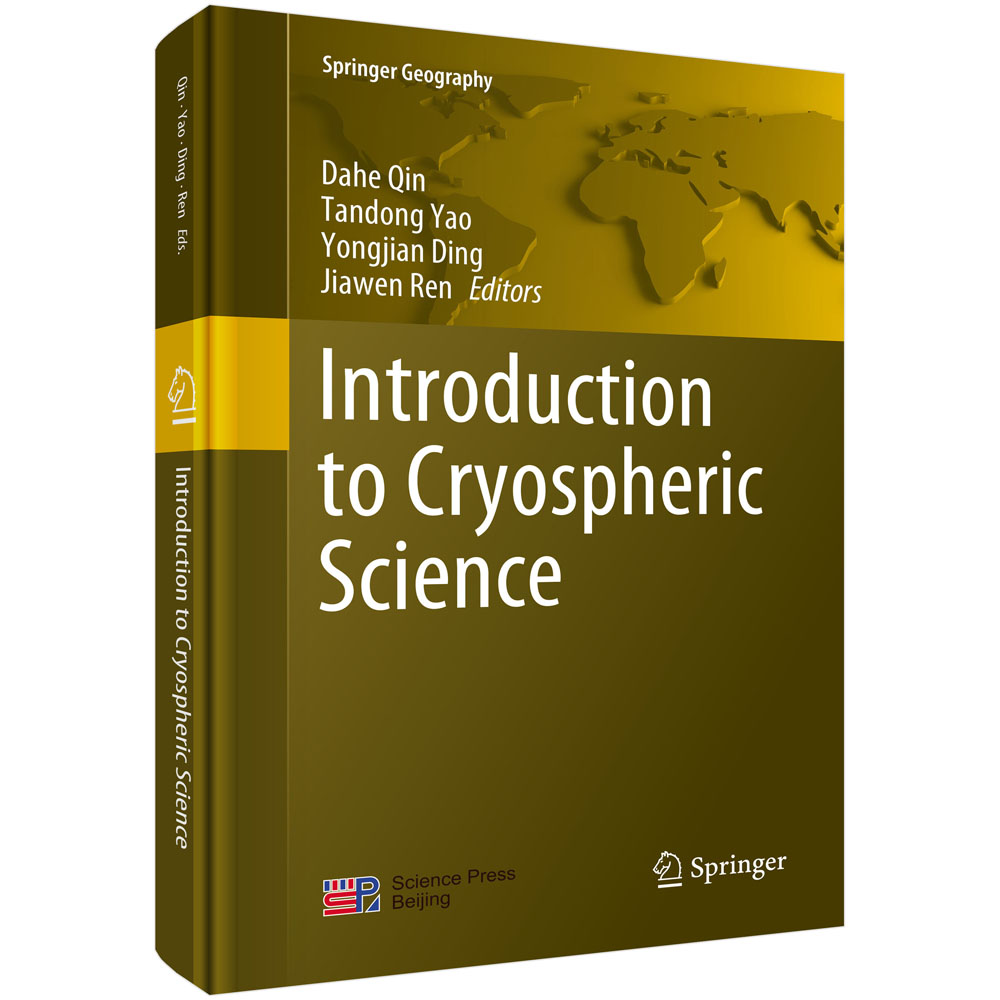
出版社: 科学
原售价: 388.00
折扣价: 306.52
折扣购买: 冰冻圈科学概论(英文版)
ISBN: 9787030677389

Chapter 1 Cryosphere and Cryospheric Science
Lead Authors: Dahe Qin, Tingjun Zhang
Contributing Authors: Ninglian Wang, Shichang Kang, Cunde Xiao, Yongjian Ding, Jiawen Ren
The Intergovernmental Panel on Climate Change (IPCC) Fifth Assessment Report (AR5) states that it is extremely likely that more than half of the observed increase in global average surface temperature from 1951 to 2010 was caused by the anthro- pogenic increase in greenhouse gas concentrations and other anthropogenic forcing together. The global warming is indicative of atmosphere, hydrosphere, cryosphere, biosphere and lithosphere. Among them, the cryosphere warming leads to melting and retreating of glaciers, degradation of permafrost, and reduction in extent of snow cover and sea ice.
The cryosphere change has a significant impact on global and regional climate, ecosystem and human well-being. On a global scale, the Antarctic and the Greenland ice sheets are very sensitive to climate, and their changes may affect ocean circulation and sea level rise. Changes in the extent of snow cover and sea ice play critical roles in energy and radiation balance on earth surface, in addition to key processes and feedback of atmospheric circulation.
On a regional scale, the future changes of mountain glaciers, river ice, and lake ice may have a dramatic impact on water resources and ecosystems along with the recurring and intensifying cryosphereic hazards and disasters. Meanwhile, the retreat of sea ice in the Arctic Ocean would create more opportunities for new shipping routes and exploration of subsea resources. However, it can also noticeably elicit more disputes for territory and resources among the circum-Arctic and pan-Arctic nations.
Locally, a freezing and thawing process of seasonally frozen grounds (including the active layer over permafrost) changes soil moisture, subsequently affecting vege-tation and ecosystem as a whole. Additionally, the frost heaving and thaw settlement may cause serious damages to infrastructure in cold regions. Considering a global warming scenario, the frozen organic carbon in permafrost can be decomposed by microbial processes resulting from the increase of the active layer thickness and thermokarst activities. It increasingly releases methane (CH4) and carbon dioxide (CO2) into the atmosphere, adding to the atmospheric greenhouse gas concentration and further exacerbating global warming.
The above-mentioned various important roles that the cryosphere plays are amid the intensified inter-disciplinary and multi-disciplinary researches, aiming at more pragmatic applications in close relationship with human activities. Overall, the cryospheric processes are critical in the climate system, and complex when inter- acting with the other spheres. Improved knowledge about them will considerably advance the understanding of the cryosphere and the cryospheric science as a whole.
1.1 Cryosphere
1.1.1 Definition of the Cryosphere
The cryosphere is a sphere on the earth’s surface with a certain thickness, where temperature is continuously at or below 0 °C. Therefore, water in the cryosphere generally exists in a frozen state. In interacting with the lithosphere, the key compo-nents of the cryosphere occur in ground from the earth surface down to a certain depth from tens of meters to thousands of meters. In relation to the hydrosphere, the cryosphere appears in the Southern Ocean and the Arctic Ocean surface at a depth from less than a meter to several meters. The subsea permafrost may even extend to several hundred meters deep into the continental shelf. The thickness of glaciers and ice sheets varies from a few meters to thousands of meters. In the atmo-sphere, the cryosphere exists above the layer of 0 °C isotherm in the troposphere and stratosphere.
In general, the cryosphere is composed of glacier (including ice sheet), frozen ground (including permafrost and seasonally frozen ground), snow cover, river ice and lake ice, sea ice, ice shelf, iceberg and subsea permafrost, and frozen water in the atmosphere. Spatially, the mid-latitude and high-latitude regions are the main areas for the cryosphere.
It should be noticed, on the surface of ice crystals and soil particles, there exists a quasi-molecular membrane of water with temperature below the freezing point. The unfrozen water also exists in frozen ground due to soil capillary and particle absorption. The unfrozen water is still considered as a part of the cryosphere. In contrast, although temperature of surface sea water or water underneath sea ice and ice shelves in the Southern Ocean or the Arctic Ocean may be at a few degrees below 0 °C, this part of sea water in a liquid state is not considered as part of the cryosphere.
1.1.2 Cryosphere Classification and Its Characteristics
Cryosphere can be divided into three major categories: continental cryosphere, marine cryosphere and aerial c